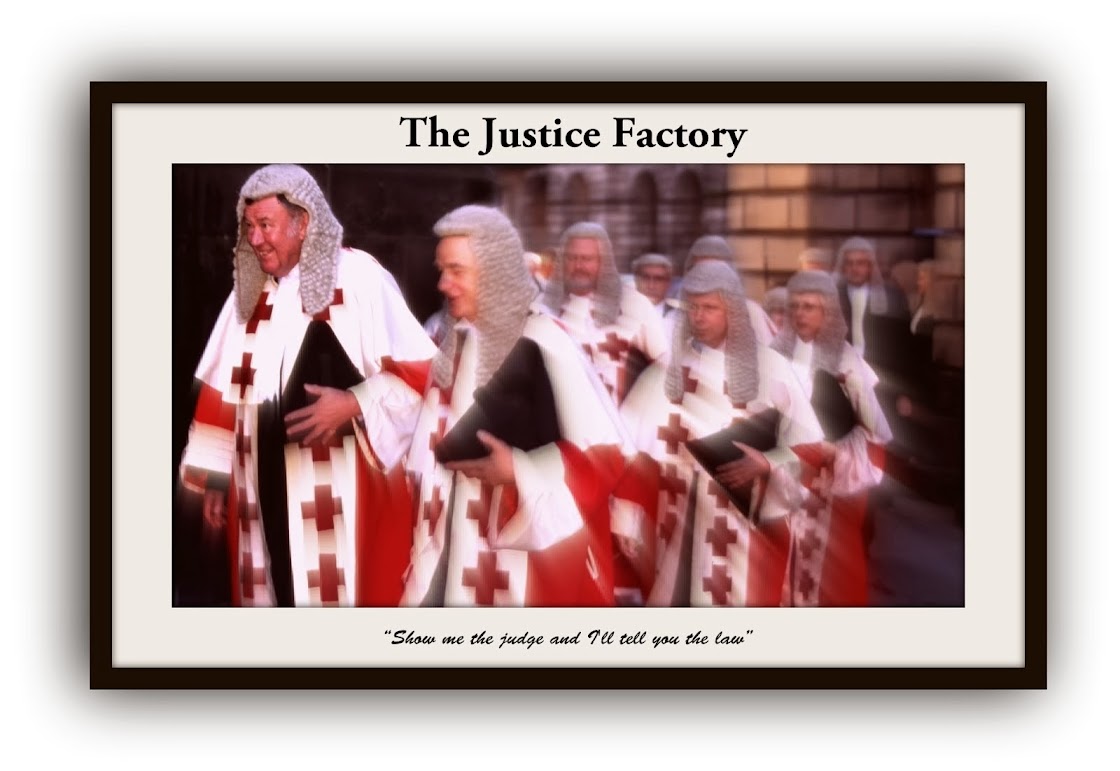 As the proud author, I am going to start this blog with a brief description of my book
As the proud author, I am going to start this blog with a brief description of my book! It is available both
print form from Amazon and in electronic form on
Kindle. Readers interested in the English language might find something useful in it too because I have devoted quite a bit of space to considering the language of law.
in
Below I give a very brief outline of the contents of the book. To the right, is a picture of the cover.
I hope some of you will think it worth reading. If so, I look forward to hearing your reaction by email.
The Justice Factory: Content Guide
The Introduction explains the purpose of the book, which is to present a picture of the personality and character of the senior judges in Scotland while comparing them to judges in England and the United States. Where judges have scope for making independent decisions, the character of the judge is both important and, in a democracy, a subject of legitimate public concern.
Also explained is the attempt by the most senior judge in Scotland, the Lord President of the Court of Session, to prevent the author getting access to judges. He failed, with the result that this is the first book to be published in English which describers the business of judging, from both a practical and a jurisprudential point of view, in the words of the judges themselves.
Chapter One (“The Law as Guardian”) describes the best of judging, US v Nixon (1974) the “Watergate” case, in which a body of judges managed to defeat an attempt to frustrate the rule of law by the assertion of unlimited executive privilege on the part of the then President, Richard Nixon.
Chapter Two (“The Law as Theatre”) describes the worst of judging, telling the story of the Engineers’ Trial in Moscow in 1933, which was controlled by the Stalin in order to defeat the ends of justice and play politics with the liberty of six Britons and twenty Russians accused of “wrecking”.
Chapter Three (“The Law as Codified Custom”) tells the story of two Scottish cases of interest to the theme of the character of judges being relevant to the way in which judicial power is exercised in a humane jurisdiction. The first case concerns a disputed flower garden on a croft in Shetland, and the second one the presence of a lamb which was alleged to be infringing the rights of the millionaire owner of a 200,000-acre estate in the Highlands by nibbling the grass which he required for the deer he wanted to be able to hunt.
Chapter Four (“Judging as it Was”) tells the story of four interesting Scottish judges, Lord Braxfield in the eighteenth century (Scotland’s “hanging judge”), Lord Cockburn in the nineteenth (the first architectural conservator of Edinburgh), and, in the twentieth, Sheriff Bill Hook (how he reacted to being called “a fucking bastard” in his court) and Lord Murray (who believes that Britain’s nuclear deterrent is deployed unlawfully).
Chapter Five (“The Business of Judging”) describes in the words of the judges themselves what life is like on a day-to-day basis for judges in Scotland, the pressures they are under, both from the heavy work-load and a civil service which seems uncomfortable with an independent judiciary, and raises the fashionable cry of “accountability”, which would be in direct conflict with judicial independence.
Chapter Six (“Perception of Judging”) examines some common but inaccurate ideas of how the judiciary operates, taking one of Ian Rankin’s “Rebus” novels as the source for the popular attitude. This is set next to an author interview with Mr Rankin in which these prejudices are discussed, and more interviews with judges in which Inspector Rebus’s allegations are answered, and some questions raised about the honesty of the police.
Chapter Seven (“Judging and the Letter of the Law”) explores public misconceptions about legal certainty. Words mean what we take them to mean, and that must change over time otherwise life in an evolving world would grind to a halt. The example used is the shifting definition of “all men” in the US Declaration of Independence and Constitution over two centuries of social and political change.
Chapter Eight (“The Future of Judging”) explores the vexed question of how we choose our judges. If they are genuinely independent they cannot be controlled, so the choice of candidate is vital. How is this done in Scotland and the United States? What does the fu8ture hold for the Scottish Bench?
Chapter Nine (“Passing Sentence”) describes what happens to criminals when they go to jail, and wraps up the argument that it is the judges who, in practice, define the law—which is why the character of the men and women on the Bench is such an important issue.




